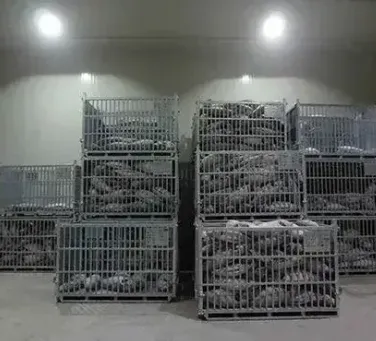Characteristics of butterfly valve
Butterfly valve is a widely used valve in the field of fluid control, which has been widely applied in many industrial fields due to its unique design and superior performance. This article will explore the main characteristics of butterfly valves, including their structural features, ease of operation, fluid flow characteristics, and scope of application.

Structurally, the valve body of the butterfly valve is circular with a rotatable valve plate inside
A butterfly valve opens and closes the fluid through rotation. This design makes butterfly valves relatively small in volume and weight, making them suitable for use in places with limited space. In addition, butterfly valves are made of various materials, such as cast iron, stainless steel, plastic, etc. Suitable materials can be selected according to different fluids and working environments to improve the corrosion resistance and pressure resistance of the valve.
The operation of butterfly valve is very convenient
Compared with other valves, the opening and closing action of the labalaba àtọwọdá requires only a small amount of torque, which means that less force is required during operation. Therefore, in practical applications, electric or pneumatic devices can often be used to achieve automation control, greatly improving work efficiency. In addition, the opening and closing time of butterfly valves is relatively short, usually completed within a few seconds, which can quickly respond to changes in system requirements.
Butterfly valve also has significant advantages in fluid flow characteristics
Due to the flat design of the valve plate of the labalaba àtọwọdá, the contact area with the fluid is relatively small, which reduces the resistance of the fluid flowing through the valve and thus reduces energy loss. This characteristic enables butterfly valves to maintain a high flow rate under fluid flow conditions, making them suitable for situations where flow rate, pressure, and other parameters need to be adjusted. Especially in large-diameter fluid transportation, butterfly valves exhibit superior performance.
The butterfly valve has a very wide range of applications
It can not only be used for controlling general fluids such as water, gas, and oil, but also applied to some special occasions, such as chemical, pharmaceutical, food processing, and other industries. In addition, with the development of technology, the intelligent control of butterfly valves is becoming increasingly popular, making their application prospects in fields such as factory automation and energy management even broader.
In summary, butterfly valves have become an indispensable component in the field of fluid control due to their unique structural design, simple operation characteristics, excellent fluid flow characteristics, and wide applicability. In the future industrial development, with the continuous improvement of fluid control accuracy and efficiency, the application of butterfly valves will become increasingly common and continue to play its important role.
-
The Key to Fluid Control: Exploring the Advantages of Ball Valves in Industrial SystemsIroyinJul.09,2025
-
The Versatile World of 1, 2, and 3 Piece Ball ValvesIroyinJul.09,2025
-
Stainless Steel Ball Valves: The Ideal Choice for Efficient Flow ControlIroyinJul.09,2025
-
Optimizing Fluid Control with Ball Float ValvesIroyinJul.09,2025
-
Manual Gate Valves: Essential for Control and EfficiencyIroyinJul.09,2025
-
Everything You Need to Know About Butterfly ValvesIroyinJul.09,2025
-
The Versatility of Wafer Type Butterfly ValvesIroyinJul.08,2025




